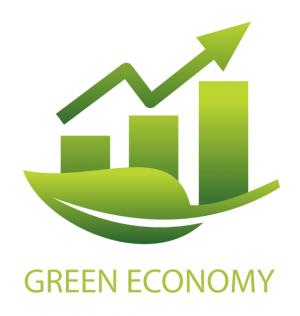Bilbao Ría 2000- Transformation of Bilbao, Spain through public/private partnerships
Description
Source: Shanghai Manual: A Guide for Sustainable Urban Development in the 21st Century (2010)
Historically, the City of Bilbao, Spain was dominated by heavy industries, such as steel, shipyards, and machine engineering. Metropolitan Bilbao suffered from serious environmental degradation as a result of its industrial past. Air, water and soil were seriously polluted. Industrial waste and household sewage drained into the river without being treated until the late 1980s. The main harbor or Nervión was ecologically dead. In response, the city of Bilbao drafted the strategic plan for the Revitalization of Metropolitan Bilbao in 1991. This strategic plan outlined four major fields of action, including the formation of a knowledge-based high-tech sector, inner-city urban renewal, environmental improvements and the strengthening of cultural identity.
To carry out its plan, Bilbao Ría 2000 was founded in 1992 as a non-profit, publicly sponsored partnership that operates based on a complex model involving all levels of government. By investing a total of 560 million between 1997 and 2006, Bilbao Ria was able to regenerate and redevelop the central business district of Bilbao through improvements in harbor and railway infrastructure. In addition, investments were made in revitalizing key areas of the city that effectively preserved the city's cultural identity. Perhaps the most important project was the investment of 1 billion in the construction of a new water sanitation system that reduced environmental contamination of the city and the harbor.
The financial model of land value enhancement through changing the land-use of old industrial sites has been very successful in financing urban regeneration in Bilbao. The financially self supporting approach enables the agency to finance its own redevelopment strategies. The model of Bilbao Ría 2000 demonstrates that action can be taken even in the context of strained public budgets. A key to the success was bringing together all levels of government in the project. This carefully constructed but functioning balance between different political interests has been very important.
SDGS & Targets
Goal 8
Promote sustained, inclusive and sustainable economic growth, full and productive employment and decent work for all
8.1
8.1.1
Annual growth rate of real GDP per capita
8.2
Achieve higher levels of economic productivity through diversification, technological upgrading and innovation, including through a focus on high-value added and labour-intensive sectors
8.2.1
Annual growth rate of real GDP per employed person
8.3
Promote development-oriented policies that support productive activities, decent job creation, entrepreneurship, creativity and innovation, and encourage the formalization and growth of micro-, small- and medium-sized enterprises, including through access to financial services
8.3.1
Proportion of informal employment in total employment, by sector and sex
8.4
Improve progressively, through 2030, global resource efficiency in consumption and production and endeavour to decouple economic growth from environmental degradation, in accordance with the 10-Year Framework of Programmes on Sustainable Consumption and Production, with developed countries taking the lead
8.4.1
Material footprint, material footprint per capita, and material footprint per GDP
8.4.2
Domestic material consumption, domestic material consumption per capita, and domestic material consumption per GDP
8.5
8.5.1
Average hourly earnings of female and male employees, by occupation, age and persons with disabilities
8.5.2
Unemployment rate, by sex, age and persons with disabilities
8.6
8.6.1
Proportion of youth (aged 15-24 years) not in education, employment or training
8.7
Take immediate and effective measures to eradicate forced labour, end modern slavery and human trafficking and secure the prohibition and elimination of the worst forms of child labour, including recruitment and use of child soldiers, and by 2025 end child labour in all its forms
8.7.1
Proportion and number of children aged 5‑17 years engaged in child labour, by sex and age
8.8
Protect labour rights and promote safe and secure working environments for all workers, including migrant workers, in particular women migrants, and those in precarious employment
8.8.1
Fatal and non-fatal occupational injuries per 100,000 workers, by sex and migrant status
8.8.2
Level of national compliance with labour rights (freedom of association and collective bargaining) based on International Labour Organization (ILO) textual sources and national legislation, by sex and migrant status
8.9
By 2030, devise and implement policies to promote sustainable tourism that creates jobs and promotes local culture and products
8.9.1
Tourism direct GDP as a proportion of total GDP and in growth rate
8.10
Strengthen the capacity of domestic financial institutions to encourage and expand access to banking, insurance and financial services for all
8.10.1
(a) Number of commercial bank branches per 100,000 adults and (b) number of automated teller machines (ATMs) per 100,000 adults
8.10.2
Proportion of adults (15 years and older) with an account at a bank or other financial institution or with a mobile-money-service provider
8.a
8.a.1
Aid for Trade commitments and disbursements
8.b
By 2020, develop and operationalize a global strategy for youth employment and implement the Global Jobs Pact of the International Labour Organization
8.b.1
Existence of a developed and operationalized national strategy for youth employment, as a distinct strategy or as part of a national employment strategy
SDG 14 targets covered
Deliverables & Timeline
Resources mobilized
Partnership Progress
Feedback
Action Network


